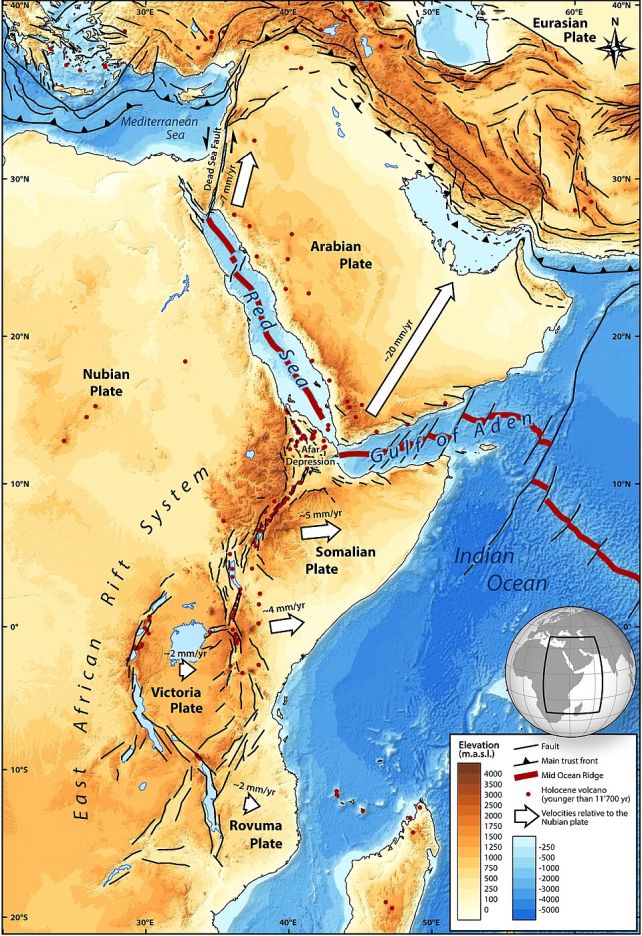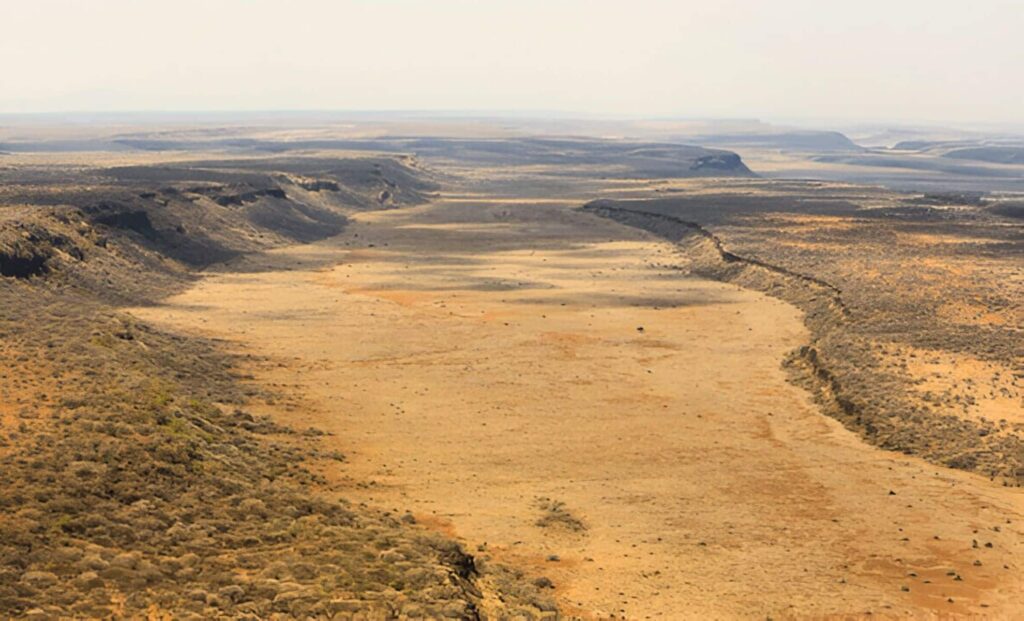In the remote Afar region of northeastern Ethiopia, a quiet but significant event is unfolding beneath the Earth’s surface. For millions of years, tectonic plates have been shifting, but recent findings suggest the mantle is pulsing beneath this region in ways previously unknown. As three plates—Arabian, Nubian, and Somalian—slowly drift apart, a deeper force seems to drive this geological change, shaping the future of the continent.
Uncovering a Hidden Pulse
Scientists from the University of Southampton, led by geologist Emma Watts, have discovered a rhythmic pulse emanating from the Earth’s mantle beneath the Afar Triple Junction. According to the discovery published in Nature Geoscience, this pulse, similar to a heartbeat, was detected through chemical signatures left in volcanic rocks from the region. These findings suggest that the mantle, which is partially molten, is not static but moves in distinct, periodic bursts.
“The mantle beneath Afar is not uniform or stationary,” Watts said. “It pulses, and these pulses carry distinct chemical signatures that reveal the deep processes occurring underneath.” The pulse observed appears to be linked to the ongoing rifting of the African continent, where the crust is being pulled apart, setting the stage for the creation of a new ocean basin.

Tectonic Forces at Work
The Afar Triple Junction is a geologically active area where the Arabian, Nubian, and Somalian plates meet. This site is one of the few places on Earth where a new ocean is beginning to form. The slow separation of these plates, particularly in the Red Sea Rift, is actively reshaping the landscape. The mantle’s pulsing movements contribute to the weakening of the crust, which may eventually lead to the formation of a new body of water as the region sinks below sea level.
This phenomenon is not just about plate movement; it also reveals the significant role of mantle upwellings. These plumes of hot, molten material rise from deep within the Earth and interact with the overlying tectonic plates, pushing them apart. The influence of mantle plumes, scientists now suggest, extends beyond what was previously understood. Their pulses shape volcanic activity and seismic events, offering new insights into the planet’s ongoing geological evolution.
The Role of Volcanic Activity
The Afar region is already known for its intense volcanic activity. The presence of active volcanoes, such as Erta Ale, a continuously erupting basaltic volcano with a lava lake, adds to the region’s unique geological profile. Researchers, including Watts and her team, collected 130 samples of volcanic rock from the Afar Rift and surrounding areas, focusing on the chemical signatures left by the mantle’s movements. The team’s findings suggest that the volcanic material in the region reflects the deep mantle processes that are shaping the land above.


Through these samples, scientists observed repeating chemical bands across the region, pointing to a consistent, pulsating upwelling of mantle material. This upwelling seems to act like a natural pump, pushing magma upward through the rifts, further contributing to the rifting process. As the crust thins, it is likely that the land will eventually sink, filling with seawater from the Red Sea, thus creating a new ocean.
Implications for Continental Breakup
The ongoing rifting in Afar is a remarkable example of continental breakup in action. Over the course of millions of years, the Afar Triple Junction is expected to evolve into a fully formed ocean. Scientists have long studied the process of continental breakup, using the formation of the Atlantic Ocean as a reference. Now, the Afar region provides a live case study, offering scientists a rare opportunity to observe these deep-Earth processes as they unfold in real time.
The research also suggests that the Earth’s interior processes, including mantle upwelling, play a more active role in shaping the surface than previously understood. The interaction between the mantle and the tectonic plates above, coupled with the pulse-like movements of magma, helps guide the rifting process and may offer new insights into future geological changes across the globe.

